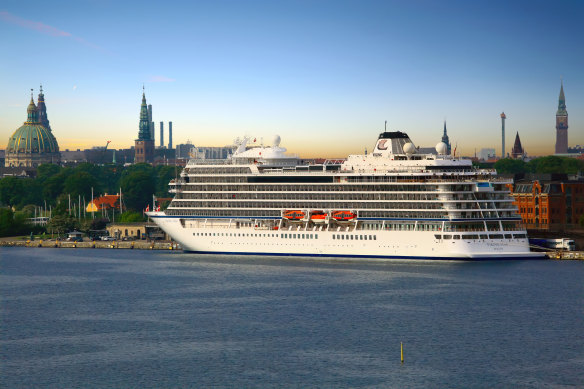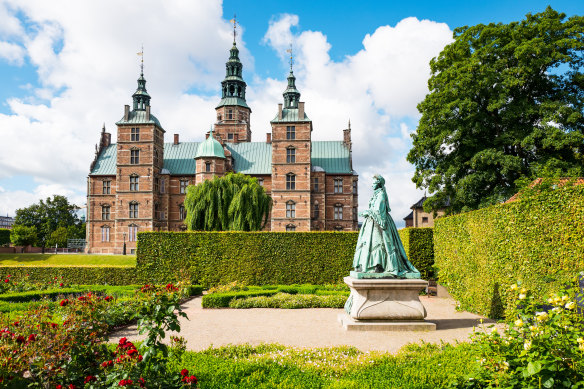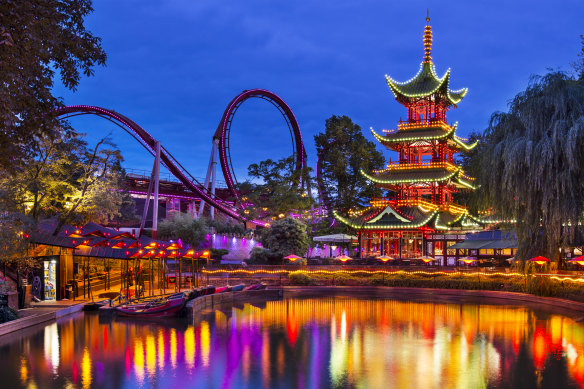Port guide: Copenhagen, Denmark
Who goes there
About 750,000 cruise passengers visit Copenhagen annually. The Danish capital is one of the key ports on Baltic cruises and some ships dock overnight. Among the wide range of cruise lines to visit are Azamara, Explora Journeys, Holland America, MSC, Norwegian, Oceania, Silversea and Viking. Expedition ships, such as those from Lindblad and Ponant, also make port calls.

The cruise ship Viking Star docked at port in Copenhagen. Credit: Getty Images
Sail on in
The Kattegat, the sea that connects the North and Baltic seas, narrows as you sail towards Copenhagen. Denmark is on one side, Sweden on the other and castles serve as a reminder of a confrontational past. As you approach the city, your ship dodges wind farms and an island fortress. It isn’t the most scenic approach, but silvery Scandinavian seas add ethereal beauty if the sun is shining.
Berth rites
Copenhagen has three cruise terminals. Nordre Toldbod is closest to the city centre (two kilometres) and takes small luxury ships. Langelinie (three kilometres) is for mid-sized ships and has a few quayside facilities but no terminal. The fit can walk from either into town via an old fortress, the Little Mermaid and waterfront promenades. Oceankaj (Ocean Quay) is for the biggest ships, and at seven kilometres from the city centre, requires a shuttle transfer or public transport.
Going ashore

The garden around Copenhagen’s Rosenborg Castle, featuring a statue of Queen Caroline Amalie.Credit: iStock
Colourful, cobbled Nyhavn harbour is a good place to start. Then check out royal residence Amalienborg, where the guard changes at noon, and Rosenborg Castle, which houses the crown jewels and has pretty gardens. Nearby is the terrific National Gallery of Denmark. Other worthy museums include the National Museum, Ny Carlsberg Glyptotek for modern French and Danish art and superb antiquities, and the David Collection, one of Europe’s most important repositories of Islamic art. Families will enjoy Copenhagen Zoo, the science-oriented Experimentarium City and Tivoli Gardens, an old-fashioned amusement park.
Don’t miss
Get a taste of everyday Copenhagen away from mainstream tourist sights in the trendy Vesterbro and Norrebro neighbourhoods beyond Tivoli Gardens, where immigrant, student and artistic communities mingle. You’ll find second-hand stores, street markets, antiques stores and great cafes and eclectic restaurants. It’s especially good for Turkish and Pakistani food. The final resting place of Hans Christian Andersen is in Norrebro’s lovely historic cemetery Assistens Kirkegard, where locals sunbathe among the graves.
Get active
Copenhagen is one of the world’s most cycle-friendly places, with half the city’s population cycling daily. Hundreds of kilometres of cycle lanes – and some bicycle-only bridges – will take you to all the main sights, or right out of the city into the countryside. Many outlets rent bicycles, and helmets aren’t compulsory. It’s all made easier by the flat terrain – the only uncertainty is the weather.

Cophenhagen’s Tivoli Gardens is the second-oldest amusement park in the world.Credit: iStock
Retail therapy
Stroget – which means “stroll” in Danish – links five pedestrian streets through the old town and is lined by elegant boutiques selling fashion, jewellery and homeware. Nearby streets have antique and art galleries. If you’re to visit only one shop, make it the flagship store of Illums Bolighus, supplier to the Danish royal family, which offers four floors of top-notch, gorgeous Danish design, including Georg Jensen silverware, Royal Copenhagen porcelain and Stelton tableware.
Further afield
A popular shore excursion takes you along the coast to North Zealand region, where the chief sights are three royal castles: Kronborg, Fredensborg and Frederiksborg, the latter an impressive Renaissance pile that houses the National Portrait Gallery. Also worthwhile is a trip to former Danish capital Roskilde for its Gothic cathedral and Viking Ship Museum, which has both archaeological remains and reconstructions of Viking vessels, plus good exhibits on Viking life.
Sign up for the Traveller Deals newsletter
Get exclusive travel deals delivered straight to your inbox. Sign up now.